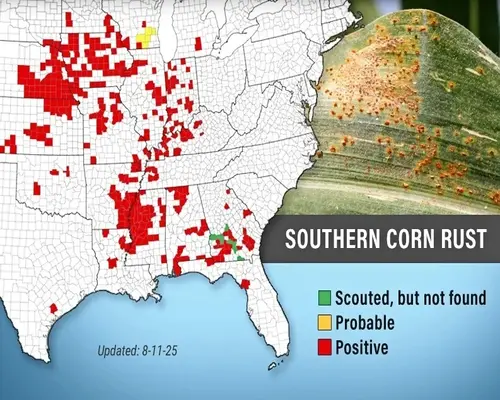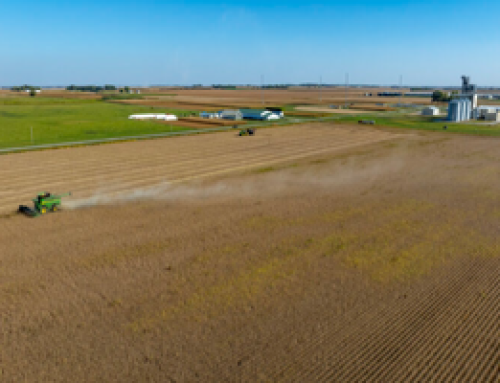 |
|---|
by Rhonda Brooks, Farm Journal
Alison Robertson says she has been at Iowa State University (ISU) for 21 years, and she’s never seen as widespread a problem southern rust is in Iowa this season. She believes the disease is present in every one of the state’s 99 counties.
She reports the disease moved into Iowa early, right at the beginning of grain fill.
“I’ve never seen this before…we’re just going to have to see how bad it gets,” Robertson, an ISU Extension field crops pathologist, told AgriTalk Host Chip Flory.
Corn yield losses from the disease can reach 30% and even more, depending on infection severity.
Karen Braun, chief market analyst at Zaner Ag Hedge and a Pro Farmer Crop Tour scout, says one of the fields she’s watching in western Iowa is “in pretty bad shape, disease-wise.”
“It’s really hard to get a feel for how widespread [southern rust] is, but I know a lot of people are talking about it, especially with how much moisture they’ve gotten out in the western belt,” she told Flory on AgriTalk.
Southern rust has infected corn in at least 18 states as of Monday, according to the Crop Protection Network (CPN). Along with Iowa, the CPN has confirmed the disease in other Midwest states, including Illinois, Kansas, Minnesota, Missouri, Nebraska and a “probable” finding in Michigan.
“Southern rust loves wet, and the fact that we saw it early and we’ve been wet means the disease is really ramping up,” Robertson says.
What The Disease Looks Like On Plants
Southern corn rust, caused by the fungus Puccinia polysora, creates round, light brown to orange spots scattered mainly on the upper leaf surface. They might also appear on husks, stalks, lower leaf surface and ear shanks.
“We’re getting all these spots, pustules on those leaves that are producing spores,” Robertson says. “When the spores are produced, they burst through the leaf epidermis, and so because of that, those leaves are probably losing a little bit more moisture than they would do with something like Northern corn leaf blight, or gray leaf spot, or even tar spot.”
Tissue damaged by the disease is not able to photosynthesize. Corn kernels are then unable to fill with starch and build a heavy test weight.
“The plants are under a lot of stress trying to fill that grain, so that can lead to premature senescence and just death of those plants,” Robertson says.
To view maps, when to spray and other information click here.




